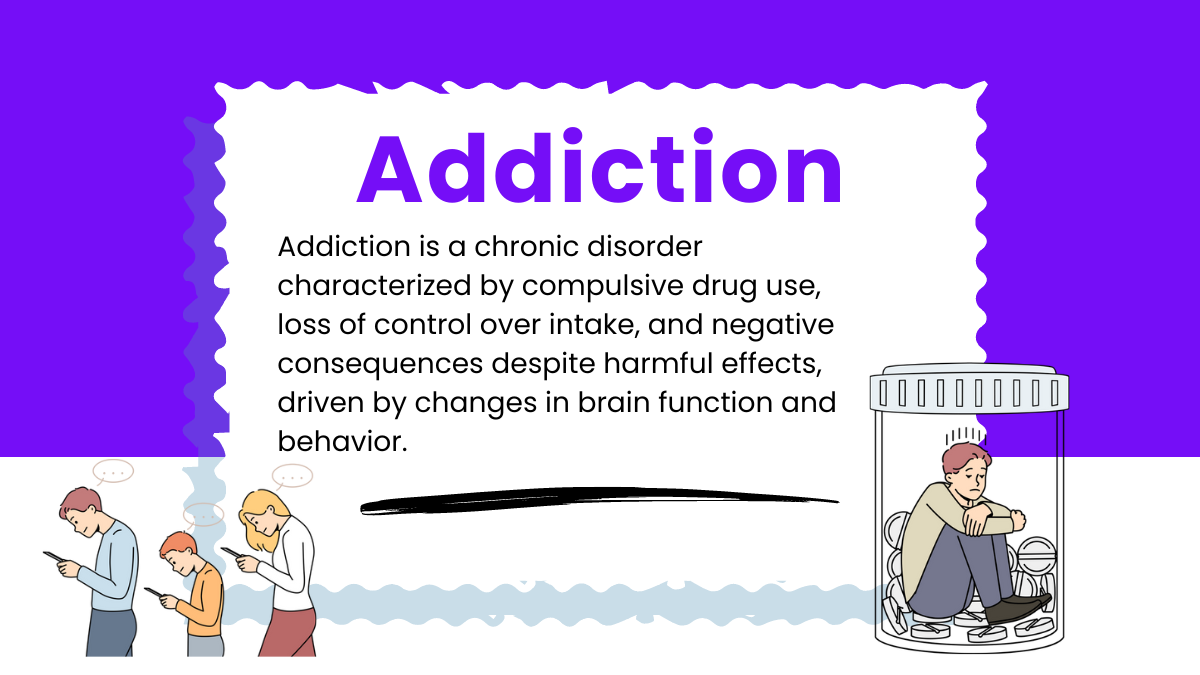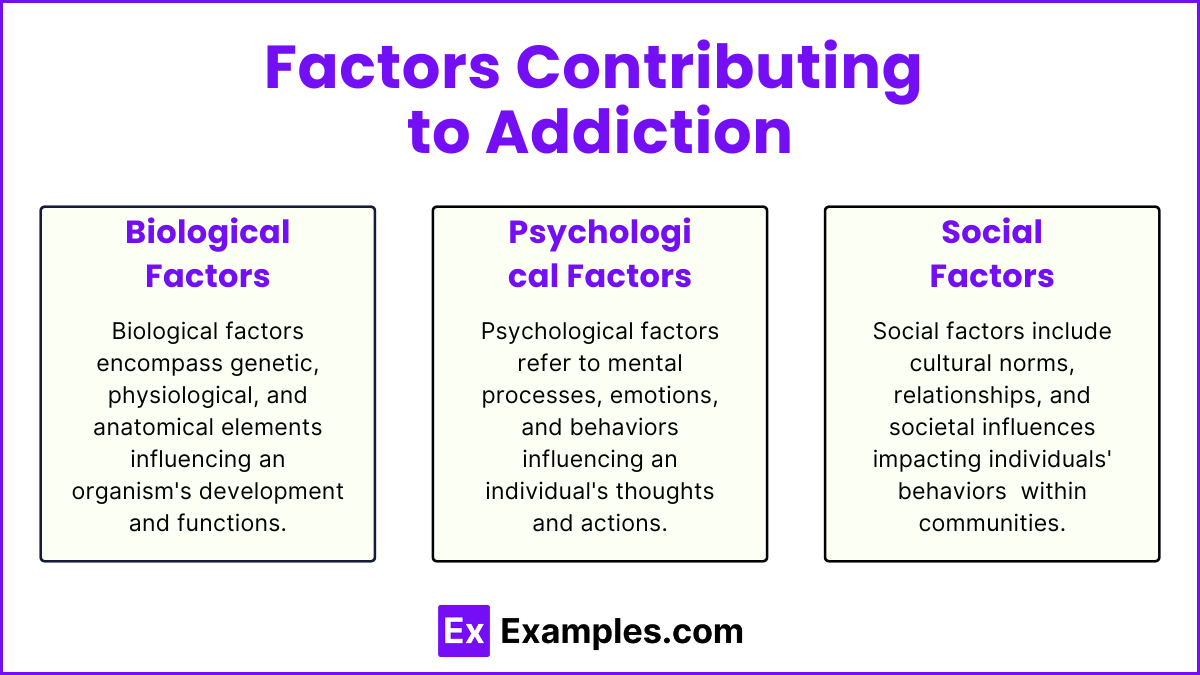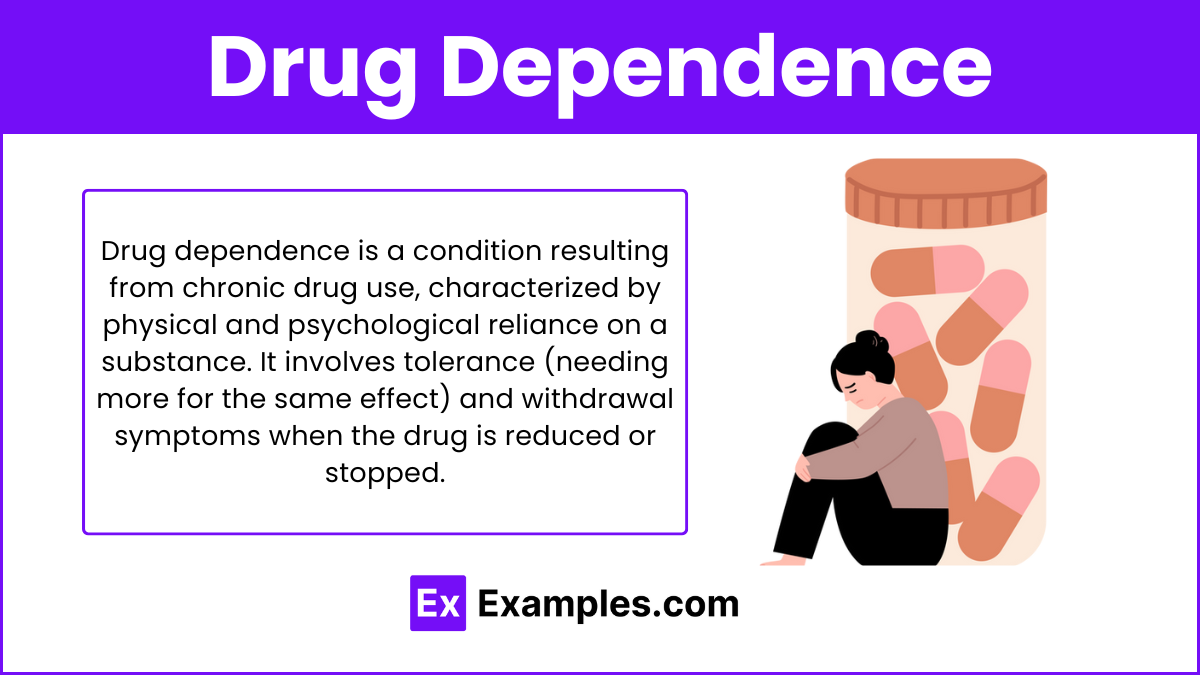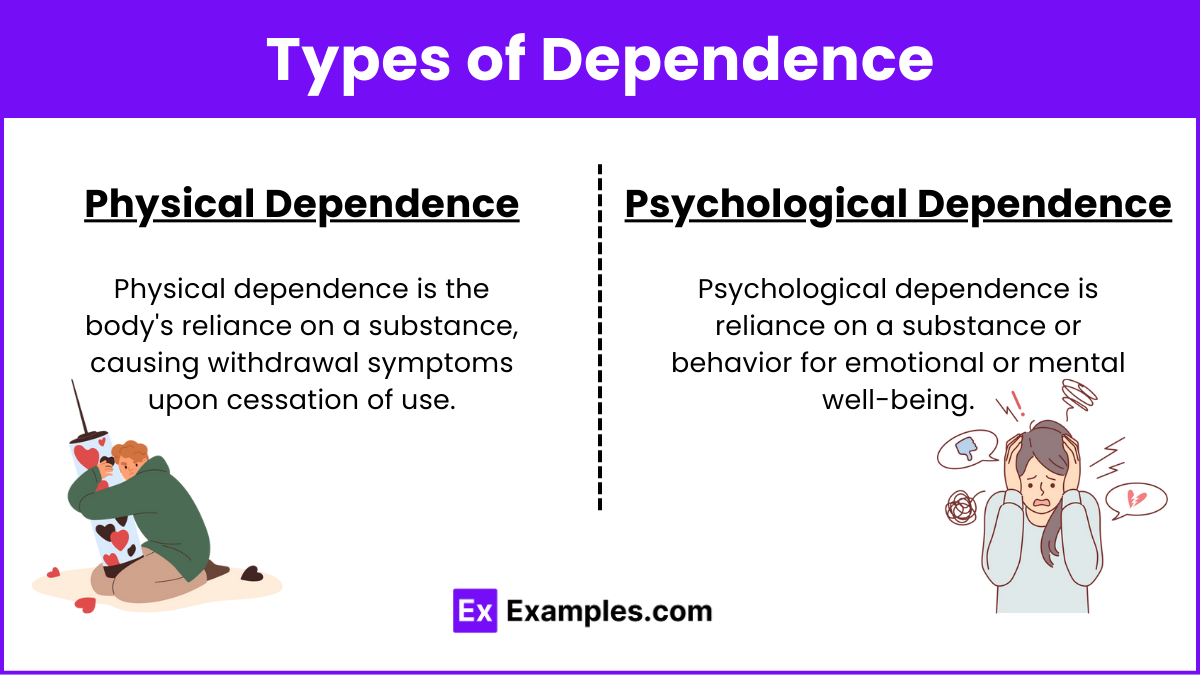Addiction and drug dependence are chronic conditions characterized by compulsive substance use despite harmful consequences. These disorders involve both physical and psychological elements, such as tolerance and withdrawal symptoms. In the context of AP Psychology, it's crucial to understand the underlying mechanisms, including changes in brain function and structure, particularly in the reward pathways. Factors contributing to addiction include genetics, mental health, and environmental influences, making it a complex interplay of biological, psychological, and social factors.
Learning Objectives
Learn about the definitions and differences between addiction and drug dependence, including their key characteristics like compulsion, loss of control, tolerance, and withdrawal. Understand the biological, psychological, and social factors contributing to addiction and dependence, such as genetics, brain chemistry, mental health disorders, and environmental influences. Familiarize yourself with the brain's reward pathway and the roles of neurotransmitters like dopamine. Study the types of drugs (stimulants, depressants, opioids, hallucinogens, cannabinoids) and their effects on the brain and behavior. Additionally, learn about various treatment approaches, including behavioral therapies, medications, and support groups, and the impact of addiction on health, social relationships, and legal issues.
Addiction
Addiction is a chronic, relapsing disorder characterized by compulsive drug seeking, continued use despite harmful consequences, and long-lasting changes in the brain. It is considered both a complex brain disorder and a mental illness.
Key Characteristics of Addiction
Compulsion: A strong, often overwhelming desire to use a substance or engage in a behavior, leading to repeated use.
Loss of Control: Inability to limit the amount or frequency of substance use or the behavior, even when wanting to stop or cut down.
Negative Consequences: Continuing to use the substance or engage in the behavior despite adverse outcomes, including physical health problems, psychological issues, and negative impacts on social and occupational functioning.
Denial: Minimizing or not recognizing the extent of the problem or its negative effects, often accompanied by rationalization of the behavior.
Mechanisms of Addiction
Addiction fundamentally alters the brain's structure and function, particularly in areas associated with reward, motivation, and memory.
The Reward Pathway
Dopamine: A key neurotransmitter in the brain's reward system, dopamine plays a crucial role in the development of addiction. Drugs and certain behaviors increase the release of dopamine in the brain, creating pleasurable sensations.
Nucleus Accumbens: This brain region is central to the reward circuit. It receives dopamine from the ventral tegmental area (VTA) and is involved in reinforcing the pleasurable effects of addictive substances or behaviors.
Prefrontal Cortex: Responsible for executive functions such as decision-making, impulse control, and planning. Chronic drug use can impair the prefrontal cortex, leading to poor judgment and decision-making.
Tolerance and Withdrawal
Tolerance: Over time, repeated use of a substance can lead to tolerance, where the user needs more of the substance to achieve the same effect. This occurs because the brain adjusts to the presence of the drug, diminishing its impact.
Withdrawal: When the substance use is reduced or stopped, the brain's adaptation to the drug's presence results in withdrawal symptoms. These can include physical symptoms (e.g., shaking, sweating, nausea) and psychological symptoms (e.g., anxiety, depression, irritability).
Factors Contributing to Addiction
Biological Factors
Genetics: A person's genetic makeup can influence their susceptibility to addiction. Family history of addiction increases the likelihood of developing a substance use disorder.
Brain Chemistry: Variations in neurotransmitter systems, such as dopamine and serotonin, can make some individuals more prone to addiction.
Psychological Factors
Mental Health Disorders: Conditions like depression, anxiety, and bipolar disorder can increase the risk of addiction, as individuals may use substances to self-medicate.
Personality Traits: Traits such as impulsivity, sensation-seeking, and risk-taking behavior are associated with a higher risk of developing addiction.
Social Factors
Peer Pressure: Social influences and peer pressure can play a significant role in initiating and maintaining substance use.
Family Environment: Exposure to substance use at home, lack of parental supervision, and dysfunctional family dynamics can contribute to the development of addiction.
Impact of Addiction
Health Consequences: Addiction can lead to a wide range of health problems, including cardiovascular diseases, respiratory issues, liver damage, and mental health disorders.
Social Consequences: Relationships with family and friends can be strained or destroyed, and occupational and educational achievements can be negatively affected.
Legal and Financial Issues: Addiction can result in legal problems, including arrests and incarceration, as well as financial difficulties due to spending on substances and loss of income.
Drug Dependence
Dependence is crucial for effective treatment and prevention. Recognizing the biological, psychological, and social factors that contribute to addiction can help develop comprehensive strategies to combat this complex disease. Through a combination of behavioral therapies, medications, and support systems, individuals can achieve and maintain recovery, leading to healthier and more fulfilling lives.
Types of Dependence
Physical Dependence:
Definition: The body's physiological adaptation to a drug, characterized by the development of tolerance and withdrawal symptoms.
Tolerance: Over time, a person needs more of the drug to achieve the same effect because the body becomes accustomed to the presence of its molecules.
Withdrawal Symptoms: Physical symptoms that occur when the drug is reduced or stopped, which can include nausea, sweating, tremors, and seizures, depending on the substance.
Psychological Dependence:
Definition: Emotional and mental preoccupation with a drug, leading to cravings and compulsive use.
Cravings:An intense desire for the drug, often triggered by environmental cues or stress, can be better understood through advancements in biotechnology that reveal how external factors influence brain chemistry and behavior.
Compulsive Behavior: Persistent, uncontrollable urge to use the drug, despite awareness of its harmful effects.
Mechanisms of Drug Dependence
Neurochemical Changes
Neurotransmitter Alterations: Chronic drug use disrupts normal neurotransmitter levels and receptor functions in the brain.
For example, opioids increase dopamine release, creating a strong reward signal that reinforces drug-taking behavior.
Brain Adaptation: The brain's reward system adapts to the frequent presence of the drug, making natural rewards (like food or social interactions) less pleasurable by comparison.
Brain Regions Involved
Nucleus Accumbens: Central to the brain's reward circuit, it releases dopamine in response to drug use.
Ventral Tegmental Area (VTA): Releases dopamine to the nucleus accumbens and other brain areas, reinforcing the drug's rewarding effects.
Prefrontal Cortex: Involved in decision-making and impulse control; impaired function in this area can lead to compulsive drug use.
Factors Contributing to Drug Dependence
Biological Factors
Genetics: A genetic predisposition can create a symbiotic relationship between an individual's biology and their susceptibility to drug dependence, where genetic factors enhance the likelihood of developing this condition.
Brain Chemistry: Variations in brain chemistry, including neurotransmitter imbalances, can increase the risk of dependence.
Psychological Factors
Mental Health Disorders: Conditions such as depression, anxiety, and PTSD are often associated with higher risk of drug dependence as individuals may use drugs to self-medicate.
Personality Traits: Traits like high impulsivity and sensation-seeking behavior can contribute to the likelihood of developing dependence.
Social Factors
Environment: Exposure to drug use in the home or community increases the risk of dependence.
Peer Influence: Pressure or encouragement from friends or social groups can lead to initial drug use and subsequent dependence.
Symptoms and Consequences of Drug Dependence
Physical Symptoms
Tolerance: Needing more of the drug to achieve the desired effect.
Withdrawal: Experiencing symptoms such as anxiety, irritability, fatigue, nausea, and sweating when not using the drug.
Psychological Symptoms
Cravings: Intense desire for the drug.
Compulsive Use: Persistent use despite awareness of negative consequences.
Consequences
Health Issues: Chronic use can lead to severe health problems, including organ damage, infectious diseases (from needle use), and overdose.
Social and Occupational Impact: Dependence can strain relationships, lead to job loss, and result in financial difficulties, much like how fluctuations in heart rate can indicate broader health issues.
Legal Issues: Illegal drug use can lead to criminal charges, incarceration, and a criminal record.
Treatment of Drug Dependence
Behavioral Therapies
Cognitive-Behavioral Therapy (CBT): Helps individuals recognize and change patterns of thinking and behavior related to drug use.
Motivational Interviewing: Enhances motivation to quit drugs by exploring and resolving ambivalence.
Contingency Management: Uses incentives to reinforce sobriety and positive behaviors.
Medications
Methadone: Used for opioid dependence, similar to how bacteria can be employed in medical treatments, this medication reduces withdrawal symptoms and cravings effectively.
Buprenorphine: A partial opioid agonist that helps manage opioid dependence with a lower risk of overdose.
Naltrexone: Blocks opioid receptors, preventing the effects of opioids and reducing cravings.
Disulfiram (Antabuse): Causes unpleasant reactions when alcohol is consumed, helping individuals with alcohol dependence.
Support Groups
Alcoholics Anonymous (AA): A 12-step program for individuals recovering from alcohol addiction.
Narcotics Anonymous (NA): Similar to AA but for individuals recovering from drug addiction.






